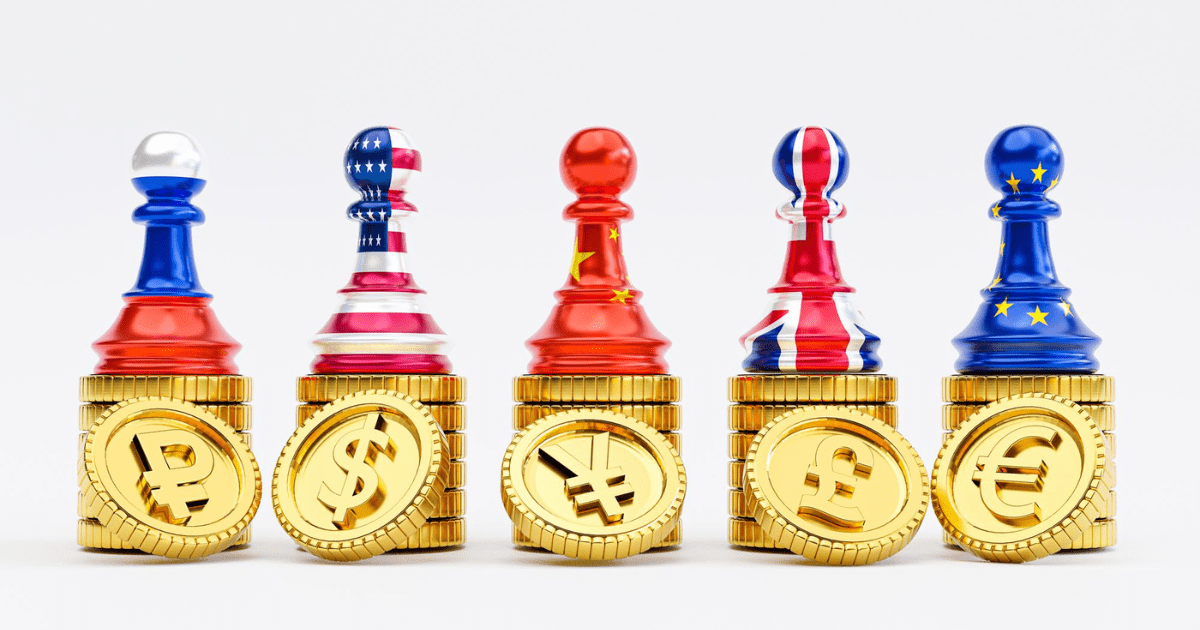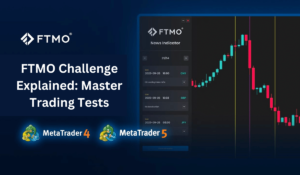Introduction
The foreign exchange market, commonly known as Forex or FX, is a global marketplace for exchanging national currencies. Forex trading involves speculating on the rise and fall of currency values to make a profit. With the accessibility and popularity of forex trading on the rise, it’s important to understand which currency pairs are the best to trade. This article will provide an in-depth analysis of the best currency pairs to trade in the forex market, including major, minor, and exotic pairs.
Understanding Forex Currency Trading
Forex currency trading involves the buying and selling of currencies. The goal is to profit from the fluctuations in exchange rates. For example, if you believe that the euro will decrease in value against the dollar, you would sell euros and buy dollars. Conversely, if you expect the euro to increase in value, you would buy euros and sell dollars. Successful forex trading requires a combination of technical analysis, fundamental analysis, and trading strategies.
How Many Forex Pairs Should You Trade?
As a new forex trader, it’s important to focus on the process rather than the profits. Starting with too many currency pairs can be overwhelming and hinder your learning progress. It is recommended to begin with one to two forex pairs and gradually increase the number as you gain experience and confidence. By focusing on a limited number of pairs, you can better familiarize yourself with their characteristics, trends, and price movements.
The Best Currency Pairs to Trade
Major Currency Pairs
Major currency pairs are the most actively traded pairs in the forex market. They represent the world’s largest economies and currencies. Here are the four most popular major currency pairs:
1. EUR/USD (Euro/US Dollar)
The EUR/USD pair is one of the most widely traded currency pairs in the forex market. It offers high liquidity and tight spreads, making it attractive to both beginner and experienced traders. The euro and the U.S. dollar are the two largest currencies globally, and their exchange rate is influenced by various economic factors, such as interest rates, GDP growth, and political events.
2. USD/JPY (US Dollar/Japanese Yen)
The USD/JPY pair is known for its liquidity and tight spreads. It is influenced by economic indicators from both the United States and Japan, including interest rates, inflation, and geopolitical events. The pair is popular among traders who prefer short-term trading strategies, such as day trading or scalping.
3. GBP/USD (British Pound/US Dollar)
The GBP/USD pair, also known as cable, is influenced by economic data and political developments in the United Kingdom and the United States. It tends to exhibit high volatility, especially during important news releases or events related to Brexit. Traders who are well-informed about the British economy and closely monitor market sentiment can find trading opportunities in this pair.
4. USD/CHF (US Dollar/Swiss Franc)
The USD/CHF pair is known as the “Swissie” and is influenced by the U.S. dollar’s strength and the monetary policies of the Swiss National Bank. Switzerland is known for its stable economy and the Swiss franc’s safe-haven status. The pair often exhibits strong trends and can be attractive to traders looking for opportunities in a less volatile market.
Minor Currency Pairs
Minor currency pairs, also known as cross-currency pairs, do not include the U.S. dollar. They involve the currencies of major economies other than the U.S. Here are some popular minor currency pairs:
1. EUR/GBP (Euro/British Pound)
The EUR/GBP pair represents the exchange rate between the euro and the British pound. It is influenced by economic indicators, monetary policy decisions, and political developments in the Eurozone and the United Kingdom. Traders who have a good understanding of both economies can find trading opportunities in this pair.
2. EUR/AUD (Euro/Australian Dollar)
The EUR/AUD pair reflects the value of the euro against the Australian dollar. It is influenced by economic data from the Eurozone and Australia, such as interest rates, employment figures, and commodity prices. Traders who follow the economic developments of these regions can capitalize on trading opportunities in this pair.
3. GBP/JPY (British Pound/Japanese Yen)
The GBP/JPY pair combines the British pound and the Japanese yen. It is influenced by economic indicators and geopolitical events in the United Kingdom and Japan. This pair is known for its volatility and is favored by traders who are experienced in analyzing market trends and using technical analysis tools.
4. GBP/CAD (British Pound/Canadian Dollar)
The GBP/CAD pair represents the exchange rate between the British pound and the Canadian dollar. It is influenced by economic data from the United Kingdom and Canada, including interest rates, employment figures, and oil prices. Traders who have insights into these economies and monitor commodity markets can find trading opportunities in this pair.
Exotic Currency Pairs
Exotic currency pairs involve the currencies of emerging or smaller economies. They are characterized by lower liquidity and wider spreads compared to major and minor pairs. Exotic currency pairs can present both opportunities and challenges for traders. Here are a few examples of exotic currency pairs:
1. USD/TRY (US Dollar/Turkish Lira)
The USD/TRY pair represents the exchange rate between the U.S. dollar and the Turkish lira. It is influenced by economic and political developments in the United States and Turkey. This pair can exhibit high volatility, presenting opportunities for traders who can navigate its price movements effectively.
2. USD/ZAR (US Dollar/South African Rand)
The USD/ZAR pair reflects the value of the U.S. dollar against the South African rand. It is influenced by economic indicators, political events, and commodity prices in both the United States and South Africa. Traders who stay informed about these factors can identify potential trading opportunities in this pair.
3. EUR/TRY (Euro/Turkish Lira)
The EUR/TRY pair combines the euro and the Turkish lira. It is influenced by economic developments in the Eurozone and Turkey. Traders who closely monitor economic indicators, political developments, and market sentiment in these regions can find trading opportunities in this pair.
4. USD/MXN (US Dollar/Mexican Peso)
The USD/MXN pair represents the exchange rate between the U.S. dollar and the Mexican peso. It is influenced by economic data, geopolitical events, and commodity prices in both the United States and Mexico. Traders who have insights into these factors can capitalize on trading opportunities in this pair.
Factors Affecting Price Movement in Forex Trading
Understanding the factors that influence price movements in the forex market is essential for successful trading. Here are some key factors to consider:
1. Economic Indicators and News Releases
Economic indicators, such as GDP growth rates, inflation figures, and employment data, can significantly impact currency values. Traders closely monitor economic news releases and adjust their trading strategies accordingly.
2. Central Bank Policies and Interest Rates
Central banks play a crucial role in shaping a country’s monetary policy. Interest rate decisions and monetary policy statements can have a profound effect on currency values. Traders analyze central bank actions and statements to anticipate market movements.
3. Geopolitical Events
Political events, including elections, geopolitical tensions, and policy changes, can create volatility in the forex market. Traders stay informed about global political developments and assess their potential impact on currency pairs.
4. Market Sentiment and Investor Risk Appetite
Market sentiment and risk appetite influence currency flows and exchange rates. Positive sentiment and risk appetite can lead to currency appreciation, while negative sentiment can result in depreciation. Traders analyze market sentiment indicators to gauge market sentiment.
Key Takeaways
- When trading forex, it’s important to focus on a limited number of currency pairs to avoid overwhelming yourself.
- Major currency pairs, such as EUR/USD, USD/JPY, GBP/USD, and USD/CHF, offer high liquidity and attract both beginner and experienced traders.
- Minor currency pairs, like EUR/GBP, EUR/AUD, GBP/JPY, and GBP/CAD, provide trading opportunities for those who have insights into specific economies.
- Exotic currency pairs, such as USD/TRY, USD/ZAR, EUR/TRY, and USD/MXN, can be more volatile and require a deeper understanding of the underlying economies.
- Economic indicators, central bank policies, geopolitical events, and market sentiment are crucial factors that impact forex price movements.
Remember, successful forex trading requires continuous learning, practice, and staying informed about global economic and political developments. By understanding the best currency pairs to trade and the factors influencing their price movements, you can make more informed trading decisions and increase your chances of success in the forex market.








